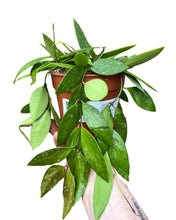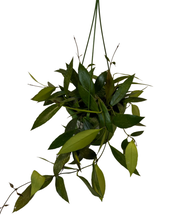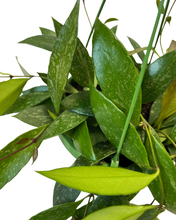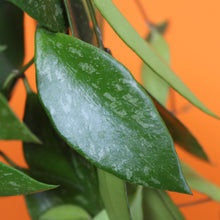Hoya gracilis is part of the Apocynaceae family and it's native range is Sulawesi. It is an epiphytic climber with lanceolate-elliptic shaped leaves, they are glabrous with an acute apex. Blooms are said to be similar to those of Hoya lacunosa - revolute and fuzzy. Leaves have silvery splashes with some pink or bronzed tones on the upper leaf surface.
Genus name is new Latin, named after Thomas Hoy ( c. 1750– c. 1821), English gardener. Specific epithet comes from the Latin meaning slender.
Light: Bright indirect light, meaning the plant sees the sun for 0-4 hours per day - this could be through trees or a translucent curtain, it’s important for the plant to see the sky in order to thrive. More hours of light are thought to encourage flowering.
Water: Given adequate light, allow the mix to dry out a little. If your Hoya is potted in a chunky, fast draining mix, you may need to water more frequently.
Potting mix: A chunky well-draining mix composed of coco coir, perlite or vermiculite, orchid bark, worm castings and some horticultural charcoal. I also recommend potting Hoya in coco chips.
Fertilising: Feed your plant every few waterings during the growing season or when you observe active growth. You can dilute fertiliser to half the recommended amount but never add more.
Temperature: 18-27˚C.
Humidity: Hoya would prefer higher humidity, between 60-80% but do well to adapt to average home humidity. You can increase humidity by placing the plant on a watered pebble tray or using a humidifier.
For further information about Hoya, check out our blog.
Hoya aren’t considered toxic, however, they may make your pet or child vomit if ingested, keep out of reach just to be safe.







